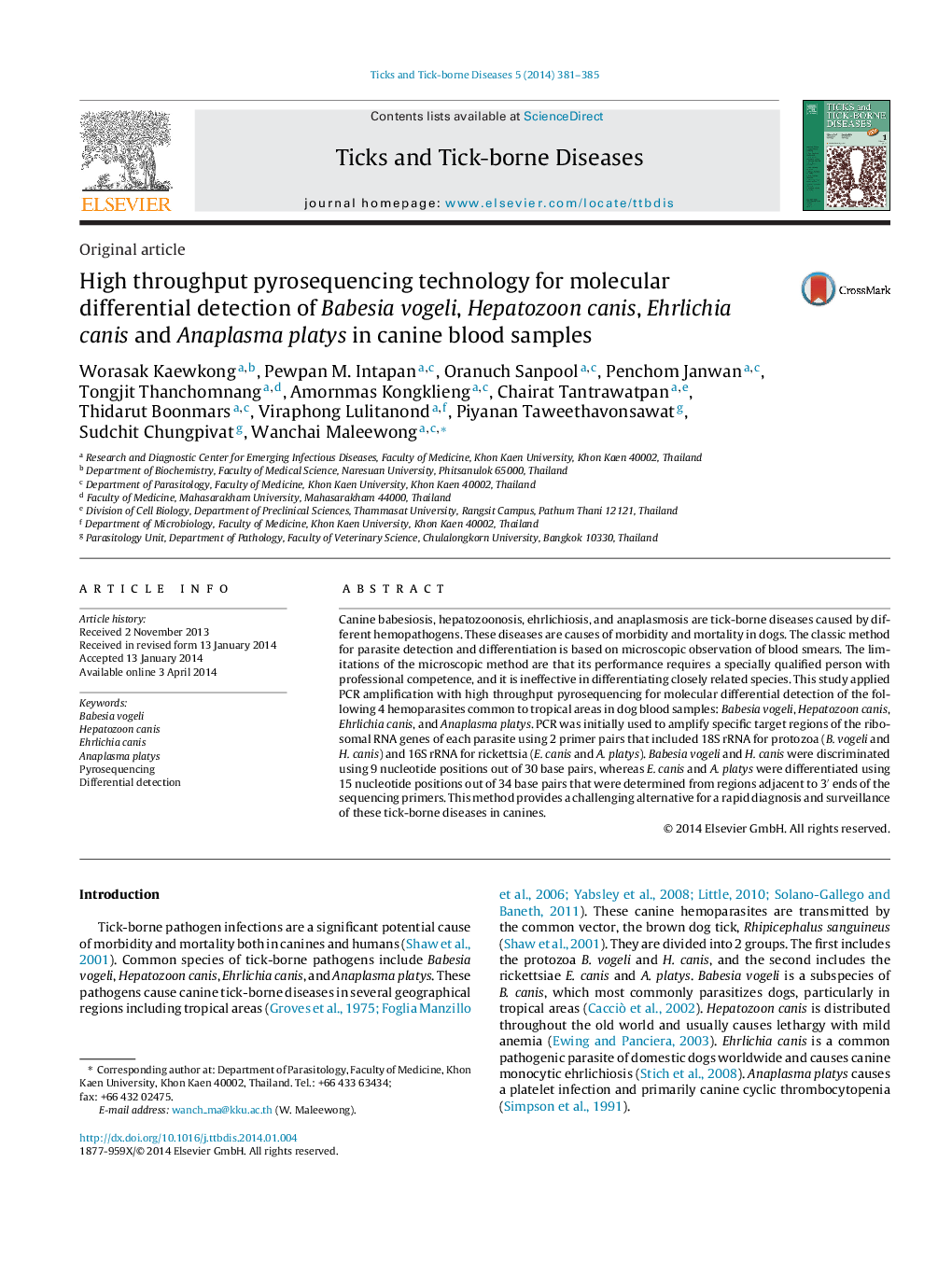| Article ID | Journal | Published Year | Pages | File Type |
|---|---|---|---|---|
| 5807319 | Ticks and Tick-borne Diseases | 2014 | 5 Pages |
Canine babesiosis, hepatozoonosis, ehrlichiosis, and anaplasmosis are tick-borne diseases caused by different hemopathogens. These diseases are causes of morbidity and mortality in dogs. The classic method for parasite detection and differentiation is based on microscopic observation of blood smears. The limitations of the microscopic method are that its performance requires a specially qualified person with professional competence, and it is ineffective in differentiating closely related species. This study applied PCR amplification with high throughput pyrosequencing for molecular differential detection of the following 4 hemoparasites common to tropical areas in dog blood samples: Babesia vogeli, Hepatozoon canis, Ehrlichia canis, and Anaplasma platys. PCR was initially used to amplify specific target regions of the ribosomal RNA genes of each parasite using 2 primer pairs that included 18S rRNA for protozoa (B. vogeli and H. canis) and 16S rRNA for rickettsia (E. canis and A. platys). Babesia vogeli and H. canis were discriminated using 9 nucleotide positions out of 30 base pairs, whereas E. canis and A. platys were differentiated using 15 nucleotide positions out of 34 base pairs that were determined from regions adjacent to 3â² ends of the sequencing primers. This method provides a challenging alternative for a rapid diagnosis and surveillance of these tick-borne diseases in canines.
